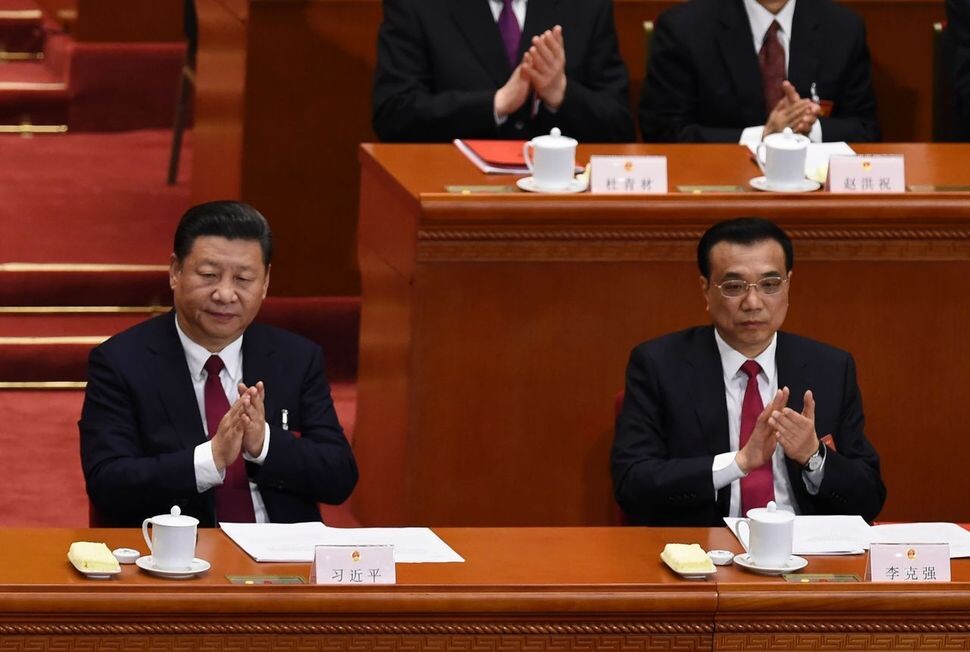hankyoreh
Links to other country sites 다른 나라 사이트 링크
[Editorial] Need a lasting solution to China-US conflict over THAAD

All Chinese group tours of South Korea were suspended as of Mar. 15. While the decision had been expected, it’s still a serious sign that China’s retaliation for the deployment of a THAAD missile defense system with US Forces Korea is stretching into the long-term with institutional backing. It’s a situation we cannot afford to neglect. Hopefully, US Secretary of State Rex Tillerson’s tour of South Korea, China, and Japan, which started the same day, will be a first step toward finding a solution.
It’s been said before, but China’s retaliatory measures are petty and unsuited to a country that professes to be a great power. It’s also hegemonic, targeting relatively weaker South Korea instead of the US, which is the primary actor behind the THAAD deployment. Certainly it harms the reciprocity and cooperation that have been the core spirit of relations between Seoul and Beijing as they mark their 25th anniversary. If the current situation continues, China is certain to suffer damage of its own. This kind of self-defeating extortion is going to continue acting as a burden on bilateral ties.
China sees the THAAD deployment as infringing upon its own strategic interests. It thinks that the US is pushing THAAD as part of a larger system of East Asian missile defense, and that it will result in much greater trilateral military and security cooperation with South Korea and Japan. From the perspective of the US-China battle for dominance, such concerns are not unwarranted. It’s something Washington is going to need to give Beijing itself an answer on itself. The US government, for its part, has said there is no chance of the THAAD deployment decision changing when a new administration comes into office in South Korea. It is problematic, however, to continue pushing the deployment without addressing China’s growing concerns. With Tillerson’s China visit and the upcoming summit early next month, the two countries are going to need to suggest some solutions for the THAAD conflict.
Seoul has claimed that the THAAD deployment is unavoidable if we are to respond to the North Korean nuclear and missile threats. It’s a self-serving position: not only is the system ineffective - with the entire greater Seoul area falling outside its defense range - but it’s also very likely to trigger objections from Beijing and Pyongyang that make the nuclear issue even worse. We also need to think about the problems it will cause if the deployment intensifies antagonisms between the US and China. Additionally, the THAAD deployment decision was made hastily and without rational procedure by a president, Park Geun-hye, who has now been impeached. There certainly is no shortage of grounds for the next administration to reconsider it.
Washington and Beijing need to take responsibility for the THAAD conflict and work on finding a solution - especially if they hope to solve the even more important North Korean nuclear issue.
Please direct questions or comments to [english@hani.co.kr]

Editorial・opinion
![[Column] Park Geun-hye déjà vu in Yoon Suk-yeol [Column] Park Geun-hye déjà vu in Yoon Suk-yeol](https://flexible.img.hani.co.kr/flexible/normal/500/300/imgdb/original/2024/0424/651713945113788.jpg) [Column] Park Geun-hye déjà vu in Yoon Suk-yeol
[Column] Park Geun-hye déjà vu in Yoon Suk-yeol![[Editorial] New weight of N. Korea’s nuclear threats makes dialogue all the more urgent [Editorial] New weight of N. Korea’s nuclear threats makes dialogue all the more urgent](https://flexible.img.hani.co.kr/flexible/normal/500/300/imgdb/original/2024/0424/7317139454662664.jpg) [Editorial] New weight of N. Korea’s nuclear threats makes dialogue all the more urgent
[Editorial] New weight of N. Korea’s nuclear threats makes dialogue all the more urgent- [Guest essay] The real reason Korea’s new right wants to dub Rhee a founding father
- [Column] ‘Choson’: Is it time we start referring to N. Korea in its own terms?
- [Editorial] Japan’s rewriting of history with Korea has gone too far
- [Column] The president’s questionable capacity for dialogue
- [Column] Are chaebol firms just pizza pies for families to divvy up as they please?
- [Column] Has Korea, too, crossed the Rubicon on China?
- [Correspondent’s column] In Japan’s alliance with US, echoes of its past alliances with UK
- [Editorial] Does Yoon think the Korean public is wrong?
Most viewed articles
- 1[Column] Park Geun-hye déjà vu in Yoon Suk-yeol
- 2Will NewJeans end up collateral damage in internal feud at K-pop juggernaut Hybe?
- 3Thursday to mark start of resignations by senior doctors amid standoff with government
- 4Why Korea shouldn’t welcome Japan’s newly beefed up defense cooperation with US
- 5‘We must say no’: Seoul defense chief on Korean, USFK involvement in hypothetical Taiwan crisis
- 6[Guest essay] The real reason Korea’s new right wants to dub Rhee a founding father
- 7N. Korean hackers breached 10 defense contractors in South for months, police say
- 8[Column] ‘Choson’: Is it time we start referring to N. Korea in its own terms?
- 9[Editorial] New weight of N. Korea’s nuclear threats makes dialogue all the more urgent
- 10Kim Jong-un expressed ‘satisfaction’ with nuclear counterstrike drill directed at South